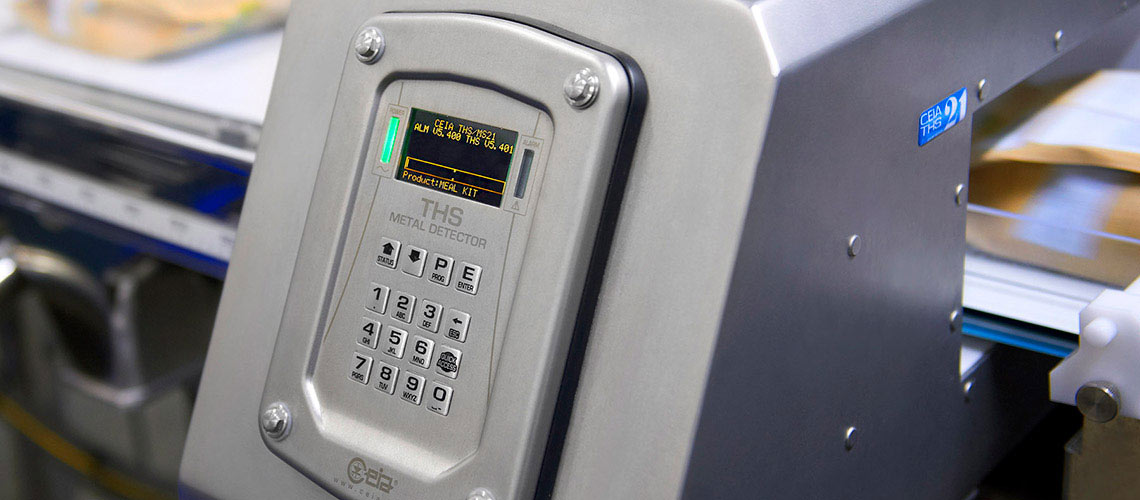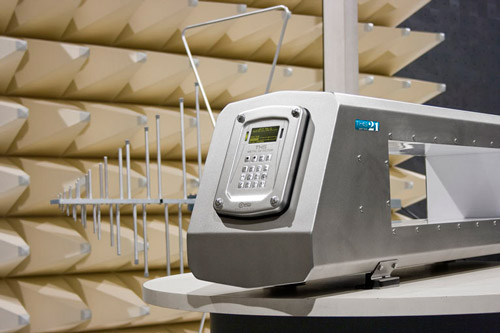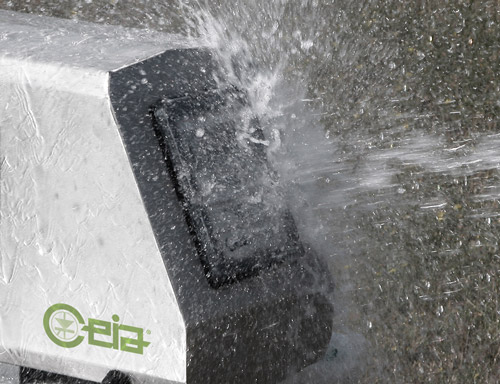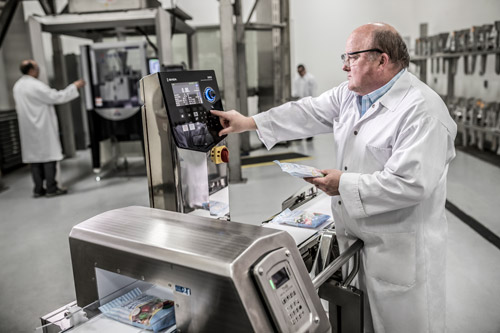Consumers expect products that are consistent and of high quality. Metal detection helps manufacturers effectively ensure product quality within budget. Look for technical performance when evaluating a metal detector.

Protecting your brand in the marketplace is one of the most important functions that a food and pharmaceutical manufacturer performs. But your investment establishing a reputation for product quality could be lost with just one safety recall. Developing and maintaining an effective, verifiable inspection program is no longer an option for processors; actually, it never was.
How can you protect your customers and your brand within your budget? Metal detection is an effective and relatively inexpensive solution. While price, delivery, and other commercial considerations are important, technical performance must be the primary factor when evaluating a metal detector to trust with your brand’s reputation.
 Product effect is an important factor when selecting a metal detector. If your products are conductive (usually due to water, salt, or iron content), they will affect the electromagnetic field of the metal detector, causing it to produce a false reject. Dry or neutral products generally do not cause this effect. If product effect is a factor, select the correct frequency to move the product effect signal away from the signal of the contaminants. A metal detector that uses a single frequency cannot accommodate much signal variation, making it unsuitable for inspecting a variety of product types or those that may vary in temperature. A metal detector that uses multiple frequencies is more suitable for these applications. The most sophisticated metal detectors on the market use multi-spectrum technology. Instead of relying on just one frequency, a spectrum of multiple frequencies work simultaneously to filter out product signals, a much more effective method than a single frequency and which also greatly reduces the number of false alarms.
Product effect is an important factor when selecting a metal detector. If your products are conductive (usually due to water, salt, or iron content), they will affect the electromagnetic field of the metal detector, causing it to produce a false reject. Dry or neutral products generally do not cause this effect. If product effect is a factor, select the correct frequency to move the product effect signal away from the signal of the contaminants. A metal detector that uses a single frequency cannot accommodate much signal variation, making it unsuitable for inspecting a variety of product types or those that may vary in temperature. A metal detector that uses multiple frequencies is more suitable for these applications. The most sophisticated metal detectors on the market use multi-spectrum technology. Instead of relying on just one frequency, a spectrum of multiple frequencies work simultaneously to filter out product signals, a much more effective method than a single frequency and which also greatly reduces the number of false alarms.
The metal detector that successfully becomes a part of a plant quality control program provides good sensitivity performance and also is easy to set up, easy to use, and provides a low level of false rejects. Most metal detectors currently on the market perform self-checks to verify that the unit is in balance and performing properly. The auto-learn routine allows the user to acquire the characteristics of the product in the unit so that the product can be inspected. An efficient auto-learn gives the best sensitivity and the least number of false rejects and requires minimal manual adjustments. This gets the unit into production with a new product most quickly.
Metal detection sensitivity needs often depend on the operation. For example, if a metal detector’s primary function is to protect a key piece of equipment, such as a sheeter or slicer, the goal would be to eliminate metal that is large enough to damage the equipment. In another part of the line, a different level of sensitivity would be required to inspect a bulk flow of product. And because final package inspection is usually the most demanding, a higher sensitivity would be needed to protect your product before reaching the marketplace. Your plant’s quality control group should have specific sensitivity targets for ferrous, nonferrous, and stainless steel (even difficult to detect type 316) contaminants for each inspection operation. These targets should be communicated to the metal detector manufacturer so that they can select the appropriate equipment for each application. Remember to be flexible to achieve realistic and achievable goals within your budget.
 Start by evaluating your inspection area. Is it wet or dry? How much does the temperature vary? Selecting a metal detector suited for your operating environment is critical. One of the most common causes of metal detector failure is water intrusion into the electrical components. If there is a washdown regimen in the plant, is it high or low pressure? Pay attention to the IP rating. An IP65 washdown rating means that the metal detector can withstand low pressure washdown with ambient temperature water; an IP69K rating means sustained high temperature and pressure. But beware: these ratings are typically self-reported. The manufacturer’s reputation in the industry for its equipment’s ability to withstand washdown can be a good indicator.
Start by evaluating your inspection area. Is it wet or dry? How much does the temperature vary? Selecting a metal detector suited for your operating environment is critical. One of the most common causes of metal detector failure is water intrusion into the electrical components. If there is a washdown regimen in the plant, is it high or low pressure? Pay attention to the IP rating. An IP65 washdown rating means that the metal detector can withstand low pressure washdown with ambient temperature water; an IP69K rating means sustained high temperature and pressure. But beware: these ratings are typically self-reported. The manufacturer’s reputation in the industry for its equipment’s ability to withstand washdown can be a good indicator.
Does the washdown include caustic agents? If so, careful attention should be given to the specific alloy of the stainless steel used for the metal detector’s case. Type 316L is more resistant to these caustic agents. For dry environments, is the finish of the metal detector painted? Placing a painted surface in the product stream could eventually contaminate your products with chips of paint. Also consider impact resistance. Plastic covers and membranes are subject to wear or impact penetration. A robust display screen and keyboard help avoid downtime and parts replacement costs.
Will the metal detector be a stand-alone piece of equipment or will it need to be integrated into the plant’s network, providing periodic data reporting for a statistical package? Does the unit have ready-made software that can provide these functions? Is it Ethernet ready? Some manufacturers provide software packages that allow for remote programming and diagnostics via laptop, including oscilloscope emulation via Bluetooth, without the need to open the power supply cabinet.
As food and pharmaceutical manufacturing regulations become more demanding, equipment must keep up. What are the internal requirements for event tracking for a metal detector? Should every operator use the same passwords? Or should each user have a unique password allowing access to only those levels that management considers appropriate for the individual? In this case, each machine entry (e.g., product change, sensitivity change, reset) can be traced to a specific operator. Select a metal detector that meets the required access and event tracking of these internal requirements.
 Consider testing your products on the metal detector before you make a purchase. In addition to evaluating the detector’s performance, you can get first-hand experience with set-up and changeover simplicity, calibration, and maintenance requirements, integration with other equipment (e.g., a checkweigher), and general construction quality.
Consider testing your products on the metal detector before you make a purchase. In addition to evaluating the detector’s performance, you can get first-hand experience with set-up and changeover simplicity, calibration, and maintenance requirements, integration with other equipment (e.g., a checkweigher), and general construction quality.
As with any equipment purchase, the buyer is not purchasing just a piece of equipment but also is entering into a long-term relationship that includes up-front application assistance, training, parts supply, and technical support. Choose a reliable supplier with whom you feel comfortable and who offers ongoing assistance.
 The MD Checklist
The MD ChecklistConsider these factors to determine the best metal detector for your needs:
Product Manager - Inspection Systems, North America